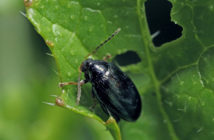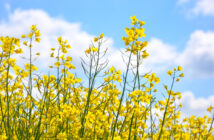Independently hosted open events at key Elsoms’ trial sites across the Eastern region offer an opportunity to directly compare the performance of oil seed rape (OSR) and wheat varieties currently in AHDB (Agricultural and Horticultural Development Board) trials. Elsoms, an emerging leader in the development of agricultural crops for the UK, runs official AHDB trials at several heavily diseased sites. The OSR open evenings at Harlaxton will be hosted by Openfield (11th May, 17th May and 18th May) , one of the UKs most successful agricultural cooperatives, while the Deeping St Nicholas site will form part of the British Society of Plant Breeders (BSPB) OSR trials tour (22nd – 23rd June). An AHDB Variety Open Day will take place at Elsoms’ main wheat trial site, at Spalding, on June 28th.
“The Openfield events include presentations from independent experts and a site tour and will really help growers to make an informed choice of variety,” said Mark Nightingale, OSR Breeder at Elsoms. “The BSPB event on the other hand allows any breeder with a variety in trial to take a good look at the competition! The sites are full of disease at this time of year – particularly light leaf spot – so differences in resistance are accentuated. It’s the ideal opportunity to see what the ratings mean in terms of what the crop will actually be like to grow, and at what’s in the pipeline in terms of better performance.”
The Elsoms wheat and OSR sites are routinely selected for AHDB trials, a tribute to the professionalism with which trials are run, but also because they come under consistently high disease pressure. Visitors will have the opportunity to see varieties in National Lists Years 1 and 2, as well as those on the Recommended Lists. Both untreated and treated plots are under cultivation.
“We’ve currently got 52 varieties of wheat in the AHDB RL trial at the Spalding site,” said Stephen Smith, Wheat Breeder at Elsoms. “We have fully untreated plots, fully treated plots (with fungicide and plant growth regulator (PGR)) and lodging plots where we apply fungicide but no PGR to assess straw strength in the absence of disease. The site sufferers from septoria, yellow rust and brown rust – all three of the major yield robbers – so visitors will be able to clearly see the strengths and weaknesses of the different varieties for themselves.”



